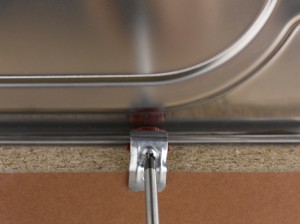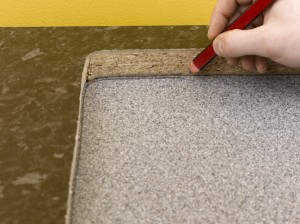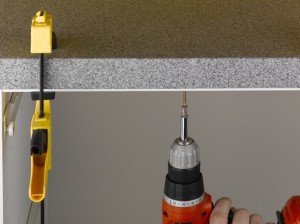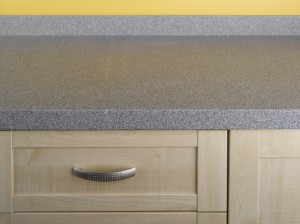Changing a kitchen worktop
Changing a kitchen worktop is a good way of revamping a kitchen, and can therefore make a big impact. The main complication is that you must remove the sink and hob so although you may be able to disconnect the water supplies and waste pipes, any work on the hob must be carried out by a professional. You could also consider fitting an upstand along the back edge of the new worktop.
 |
1. Loosen the old worktop position by unscrewing any retaining screws on the underside. Undo any clips that hold the sink unit in place. |
 |
2. The old worktop is ideal to use as a template for cutting the new one. This saves time when cutting holes for sinks or other appliances. |
 |
3. Refit sinks and taps and fix new worktop. Get professional help for electrical or gas connections. You may also find this guide helpful –‘Fitting a kitchen worktop’. |
 |
4. Cut upstands to fit along the wall at the join and secure in place with some grab adhesive. |
More things to consider when changing a worktop
- If the wall is tiled above your old worktop, you will need to cut through the silicone seal along the base of the tiles in order to break the joint.If your choice of new worktop is deeper or more shallow than the old one, this will cause a problem with the existing tile line – not a problem if you’re replacing the tiles, but if not, you’ll either have an unsightly gap or the worktop won’t fit in place under the tile edge.
- If you’ve opted for tiles above your new worktop, there are plenty of tips in my guide ‘Tiling walls’.
- Also, if you choose a different depth of worktop to the old one, supply and waste pipes may well require height adjustment. For more on cutting pipes, isolation valves and making plumbing joints, check out my ‘Plumbing guides’.
